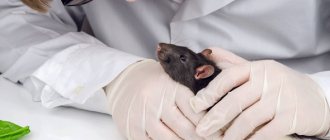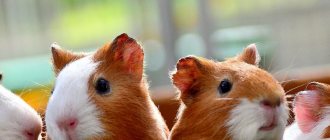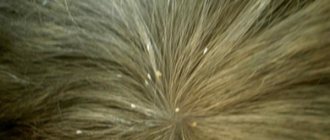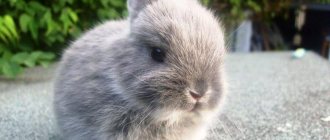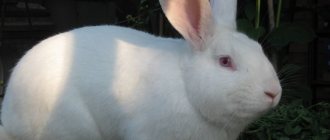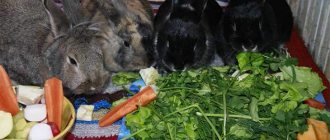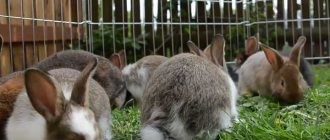- Iodide mixtures
Coccidiosis in rabbits is ubiquitous and is a dangerous invasive disease that leads to severe damage to the intestines and liver of animals. Its causative agents are protozoan unicellular parasites of the coccidia class (the genus Eimeria, the development of which does not imply a change in host).
With timely diagnosis, coccidiosis can be successfully treated
What is coccidiosis in rabbits?
Coccidiosis is caused by a single-celled parasite of the order Coccidia of the genus Eimeria. Therefore, the second name of the pathology is eimeriosis. These parasites are specific, settle only in the body of rodents, and are harmless to other farm animals. In the rabbit body they capture certain organs:
- coccidia living in the small intestine - Eimeria intestinalis, media, magma, calcicole;
- settling in the liver – Eimeria stiedae.
Outside the host’s body, coccidia are in the form of cysts, that is, they have a shell that protects them from temperature fluctuations and other negative environmental factors. Having penetrated the rabbit’s body, the parasite loses its protective shell, begins moving through the digestive tract, and settles in a suitable organ.
Pathways of transmission and developmental features of the pathogen
The disease in rabbits is caused by several types of coccidia. One of them - Eimeria stiedae - is localized in the liver, the remaining varieties live on the intestinal mucosa.
Rabbits for a long time (according to many experts throughout their lives) can be carriers of coccidia in the absence of any symptoms. Infected individuals, as well as other rodents, birds, and flies serve as a constant source of spread of the infestation, releasing oocysts (eggs) of parasites along with feces. They are very stable in the external environment and can survive for more than a year on the surfaces of cages, feeders and drinking bowls, in bedding and waste products of animals. Exacerbations of the disease are more often observed in the spring-summer period in young animals aged 1-3 months, which become infected when sucking mother's milk (a carrier of parasites) or a sudden change in feed after weaning.
A protozoan unicellular parasite that causes coccidiosis in animals
The life cycle of the parasite consists of several stages. Oocysts that enter the animal’s body develop from 4 days to 2 weeks and, under the influence of active media in the gastrointestinal tract (GIT), their membranes are destroyed. The released virulent spores actively invade the liver or intestinal tissue and in a short time turn into mature gametes capable of fertilization and the production of new oocysts.
The clinical manifestation of the disease is facilitated by viral and bacterial infections, helminthic infestations, which reduce the protective functions of the gastrointestinal tract and the animal’s immunity.
How does infection occur?
Transmission of infection occurs from an infected rabbit to a healthy one. The feces excreted by sick animals contain coccidia cysts. The infection spreads from feces to food and drinking water. A few days are enough for all individuals living in one cell to become infected.
Infection with coccidiosis is inevitable if:
- put a healthy individual in a cage with a sick one;
- the pet eats food contaminated with cysts or drinks contaminated water;
- a farm worker will bring infection on clothes or equipment after contact with sick individuals;
- a sick mother rabbit will feed her babies milk with parasites.
Coccidiosis is most often detected in young individuals. This is due to the fact that up to 4 months of age, baby rabbits switch from mother’s milk to adult food, while their immune system is still weak.
There is a possibility of infection of rabbits if meadow grass is used as feed. It may contain traces of wild mouse feces containing coccidia cysts.
Symptoms of the disease
Symptoms of hepatic and intestinal forms of pathology differ. However, in rabbits both organs are often affected simultaneously.
Intestinal form
The period between infection and the appearance of the first signs of coccidiosis is about 5 days. Symptoms of intestinal coccidiosis:
- decreased appetite, refusal to eat;
- dehydration;
- dullness and ruffled coat;
- blanching of the mucous membranes;
- green diarrhea, later streaked with blood.
Before death, convulsions are observed, then the rabbit is paralyzed.
See also
Why can a mother rabbit scatter her babies immediately after giving birth and what to doRead
Liver form
Signs of hepatic coccidiosis:
- decreased appetite;
- unquenchable thirst;
- apathetic, lethargic, drowsy state;
- the desire to hide in the far corner of the cage;
- swollen belly;
- stooping, tension due to unbearable pain.
Hepatic coccidiosis can be acute or chronic. In the first case, about 10 days after infection, the rabbit begins to experience intense diarrhea. The animal falls into a coma and dies.
Signs
Coccidiosis can occur in acute or chronic form. The symptoms of the first are clearly visible on the second or third day of the disease, and from the second the animal can walk for months, having previously been ill. It is important to correctly recognize the forms of the disease based on the signs that will be discussed below. After all, the method of treatment directly depends on how coccidiosis manifests itself.
Did you know? A rabbit that weighs 2 kg drinks the same amount of water as a dog weighing 10 kg.
Intestinal form
Coccidiosis in the intestinal stage is characterized by the following condition in a rabbit:
- diarrhea, constipation, their alternation;
- bloating, sagging abdomen;
- loss of appetite;
- weight loss and height reduction;
- dull, tousled coat;
- there may be traces of blood in the stool;
- pus comes out of the eyes and nose;
- when touched, the rabbit is hot, as its body temperature is elevated.
Intestinal coccidiosis brings very severe pain to the animal: before death, it falls on its back and convulses, jerking all its paws.
Liver form
The main difference between the hepatic form and the intestinal form is that it is not very pronounced, but the symptoms are similar. Because of this, it is hepatic coccidiosis that very often develops into a chronic disease. And it, in turn, is dangerous because the animal is the carrier and distributor of the infection all this time.
Signs of the hepatic form of the disease are similar to the intestinal type, namely:
- the rabbit is lethargic, eats poorly or does not eat at all;
- the nature of bowel movements changes - there may be constipation or diarrhea (or both);
- the animal is noticeably stunted in growth and weight gain;
- the coat is dull, the belly is saggy and swollen;
- Due to liver damage by bacteria, the mucous membrane of the eye turns yellow.
Find out what to do if your rabbit's eyes are festering.
Diagnostic methods
To make a diagnosis, the observed symptoms are analyzed, a microscopic examination of feces is carried out, and the internal organs of dead animals are also examined. The pathologist discovers white nodular formations in the tissues of the liver and intestines in the dead rabbit, ranging in diameter from poppy seeds to cereal grains - these are accumulations of parasites. The material taken during the autopsy is sent for microscopic examination. Coccidia cysts detected under a microscope allow an accurate diagnosis to be made.
How to treat coccidiosis in rabbits at home
If symptoms of coccidiosis are detected, treatment cannot be delayed, otherwise the livestock will die.
The same drugs cannot be used to treat each new outbreak of infection, as coccidia gradually become resistant to the drug.
Every 2 years you should take a new medicine.
Medication
To destroy the infection in the body of rabbits, the following medications are used to choose from:
- "Eimeterm." Sold in the form of 2.5 and 5% suspension. The active ingredient is toltrazuril (25 and 50 mg per 1 ml). The daily dose is 15 mg of toltrazuril per 1 kg of animal weight.
- "Bycox." Treatment is carried out according to the same scheme as Eimeterm, since the active substance is similar. For 1 liter of water take 5 ml of a 5% suspension (2.5% per 0.5 liter). The solution is given to the rabbit, the daily dose is 300 ml. Medicines based on toltrazuril are given to the animal for 2 days, a 5-day break is taken, and then the dose is repeated.
- "Sulfadimethoxine". The drug is added to the food of rabbits. The dose for the first day is 0.2 g per 1 kg of the pet’s weight, for the next 4 days – 0.1 g per 1 kg. The course of treatment lasts 2 days, followed by a 5-day break.
- "Furazolidone". The drug does not kill coccidia, but it is added to the course to strengthen the physical condition of rabbits. The daily amount of the drug is 30 mg per 1 kg of weight. The appointment lasts a week.
- "Fthalazol" + "Norsulfazol". The daily dose of the first drug is 0.1 g per 1 kg of weight, the second - 0.3 g per 1 kg. Reception lasts 5 days, after a 5-day break the course is resumed.
Sick rabbits are given retinol (vitamin A) and B vitamins to quickly restore damaged organs and strengthen the immune system.
Folk remedies
Iodine is used as a folk remedy. In the rabbit’s body, it oxidizes protein breakdown products, normalizes the functioning of the thyroid gland, which has a positive effect on well-being. Both adults and young animals are given iodine solution. A 0.01% solution of the substance is used for both therapeutic and prophylactic purposes. To prepare it, dissolve 1 ml of 10% iodine concentrate (or 2 ml of 5% iodine) in 1 liter of water.
To prepare the solution, do not use metal containers, but only glass or plastic ones, since iodine can react with metal to form undesirable substances.
In the first 10 days, young rabbits are given a 0.01% solution, the daily dose is 50 ml. Then they take a 5-day break. After this, the concentration of the drug is increased: 70 ml of a 0.02% solution per day for a week. In the third week, 0.02% liquid is given in a volume of 100 ml per day. For adults, the dosage is different: in the first 10 days, 100 ml of a 0.01% solution per day. After a 5-day break for 2 weeks, rabbits are given 200 ml of 0.02% liquid per day.
See also
Schemes and drawings of cages for decorative rabbits and how to make them yourselfRead
How dangerous is the disease?
The spread of infection is rapid. It is enough for one rabbit to become infected for the entire population to become ill with coccidiosis within a few days. The most dangerous for livestock are those with a chronic form of the disease, which occurs during low-intensity invasion or re-infection. The number of parasites in the body is not enough to cause severe symptoms, but the sick animal remains a carrier of the infection, releases it into the environment, and infects its cage neighbors.
In the acute form of coccidiosis, the rabbit dies within 2 weeks. Signs of imminent death are convulsions and nervous syndrome, manifested by throwing back the head.
But even if the rabbit survives, it remains a carrier of coccidia, dangerous to the livestock. Therefore, individuals who have suffered coccidiosis must be immediately slaughtered.
When the liver is affected
If hepatic coccidia predominates, the manifestations of the disease are initially weaker. The rabbit becomes inactive and eats worse. After some time, you can notice that the whites of his eyes, nose, and oral mucosa have become yellowish. Diarrhea develops, the animal loses weight. Some signs coincide with the intestinal form of the disease: the coat becomes dull, the stomach enlarges and sags.
With this type of coccidiosis, rabbits also develop exhaustion, but they are sick for a long time - up to 50 days. Sometimes individuals survive and become carriers of coccidia. They cannot be kept with healthy rabbits.
When autopsying rabbits that died from coccidiosis, you can see that their liver is several times larger than normal. On its surface, threads or dense grains of white color are clearly visible. Their size can reach a pea.
White spots visible on the liver are accumulations of oocysts. If you open them, a curdled mass comes out. In addition, the bile ducts are dilated, and there is an excess of connective tissue.
This form of disease affects not only the liver. Upon autopsy, the intestine is inflamed, although there are no nodules on its mucous membrane. The combination of two forms of the disease is the most dangerous and often leads to the rapid death of individuals.
Prevention measures
To prevent the spread of coccidiosis, the following recommendations must be followed:
- When soiled, clean and disinfect cells;
- do not allow rabbits to be kept crowded, especially those of different ages;
- feed animals with high-quality food and provide a balanced diet;
- change feed gradually;
- avoid high humidity, sudden temperature fluctuations and drafts;
- keep purchased rabbits in a month-long quarantine.
Disinfection of cells and equipment must be thorough, since coccidia cysts are resistant to ordinary cleaning agents. Many farmers use a blowtorch to burn cells. Of the strong disinfectants, a 2% solution of “Brovadez-plus” is suitable.
Is it possible to eat rabbit meat that has coccidiosis?
Rabbit coccidiosis is not dangerous to humans. You can eat meat without fear, you just need to dispose of the affected internal organs. Temperatures above 100 °C are lethal for coccidia, so after heat treatment the meat becomes completely harmless. However, many people, having seen enough of sick rabbits, disdain to eat meat and throw it away.
The skins of sick rabbits will have to be thrown away. An infected animal's fur becomes dull and crumpled; it is useless to use in furriery.
History of the study
For the first time, parasitic organisms were found by the Dutch naturalist Antonie van Leeuwenhoek, but this event went unnoticed by the scientific world. Only more than a century and a half later, active study of coccidia began, which subsequently allowed scientists to prove that it is these single-celled round-shaped microorganisms that cause eimeriosis in representatives of the Zaitsev family.

